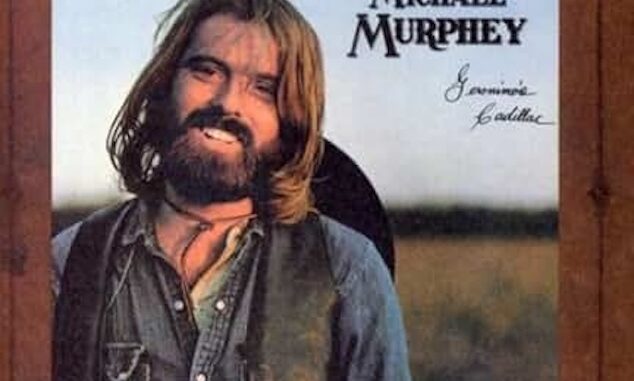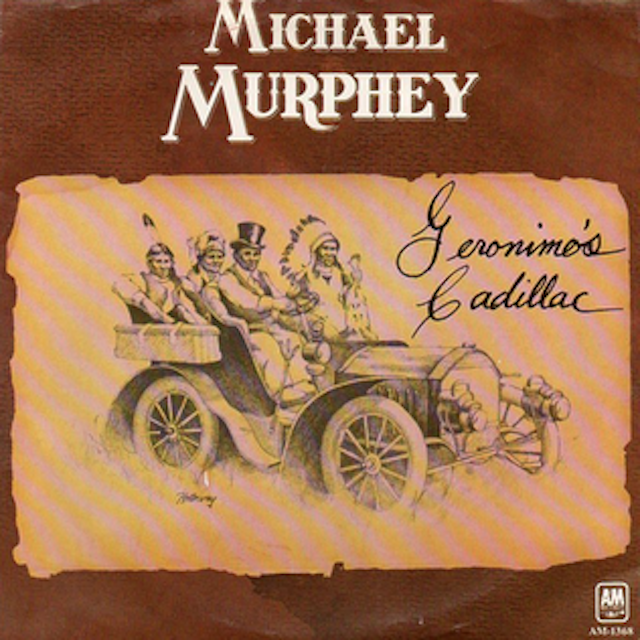
For those people in the know, any suggestion that Michael Martin Murphey would make a perfect candidate for our ‘More People Really Should Know About’ feature would be seen as nothing short of insulting and ignorant. And yet this multi-platinum selling, and multi-Grammy nominated artist, as well as one of the founders of the progressive country music movement of the early 1970’s would appear to have inadvertently slipped off the musical map of the 21st century americana and country scene.
Michael Martin Murphey, or as he was known back in those early days as simply Michael Murphey (the Martin was added in the early 1980’s to avoid confusion with the actor Michael Murphy), grew up in Dallas, Texas, and was already performing while still in junior high school. He took his first professional music job at just 17 years old and played in numerous bands before forming the Trinity River Boys with friend and fellow Texan Michael Nesmith in 1964. A few years later Nesmith would offer Murphey his first big break by asking him to write a song for his new television musical group The Monkees. Murphey duly obliged, writing ‘What Am I Doing Hangin’ Round’, for the 1967 album “Pisces, Aquarius, Capricorn, & Jones Ltd”, that would mark just the beginning of a long line of A-listed artists from across the musical genres that would record his songs. Household names such as Johnny Cash, Bobbie Gentry, John Denver, Cher, Kenny Rogers, Roger Miller, Lyle Lovett, and Flatt & Scruggs, and that just scratches the surface.
His prowess as a songwriter was rewarded by signing a record contract with A&M Records in 1971, with legendary producer Bob Johnston overseeing the release of his debut album “Geronimo’s Cadillac”, recorded at Columbia Recording Studios in Nashville. The sound of the album captured Murphey’s love of country, folk, blues and gospel music which can be heard throughout the whole album, and it was an immediate hit with music fans and critics alike, with Mike DeGagne of AllMusic giving the album a 5 star rating while ‘Rolling Stone’ magazine proclaimed “On the strengh of his first album alone, Murphey is the best new songwriter in the country”.
The title track, which is of course the song we are focussing on here, was released as a single, reaching Number 37 on the Hot 100 in Billboard magazine in July 1972, and is a co-write between Murphey and Charles John Quatro. The inspiration came from a photograph of Geronimo, who was the military leader and medicine man for the Bedonkohé band of the Ndendahe Apache people, who between 1850 and 1886 joined forces with three other Central Apache bands to carry out numerous raids across New Mexico and Arizona. Geronimo was captured and imprisoned for the third and final time after an intense pursuit through these territories and during the following years would regularly be put on display by the United States government at various fairs and exhibitions. This photo taken by the U.S. press on June 11th, 1905, at a ranch located southwest of Ponca City, Oklahoma, while Geronimo was being held prisoner at Fort Sill depicts the Apache leader seated in a Locomobile in an attempt to capitalise on his fame. On first coming across the photograph Murphey was struck by the juxtaposition of the image displaying Geronimo and the Cadillac, stating “(it) just struck me as a song title, It was every irony I could ever think of about our culture in two words. Their attempt to make of him what we would define as a civilised person. That was the reason they put him in the Cadillac in the first place”. This photograph was reproduced as a drawing on the back of the album cover as well as the picture sleeve of the single.

In the following years Murphey’s career would continue to flourish with albums such as his 1975 release “Blue Sky – Night Thunder”, that spawned another two hit singles in ‘Carolina In The Pines’, and the platinum-certified ‘Wildfire’, a track that would become his signature song. The eighties would see him continue to have significant critical and commercial success with a string of hits and in 1990 he released the album “Cowboy Songs”, of which music critic Jack Hurst from the ‘Chicago Tribune‘ wrote “(This is) not only one of the finest albums of the year, but also one the finest of the last decade”.
In more recent years Murphey has turned his musical focus towards Bluegrass, while he continues to champion such causes as protecting the western wilderness and its wildlife. A staunch supporter of the Native American Rights Movement he is the founder of the annual festival ‘WestFest’, that celebrates western art and culture.
However ‘Geronimo’s Cadillac’, still remains his most renowned and most covered song throughout the decades, with such luminaries as Hoyt Axton, Johnny Rivers, The Lost Gonzo Band, Manfred Mann’s Earth Band, Mary McCaslin and Jim Ringer, Dick Gaughan and Fairport Convention’s very own Chris Leslie all putting their own stamp on this iconic song. Enjoy.



I started with “Swans Against the Sun” and then proceeded to devour everything he released thro’out the 70’s.(and beyond!) Many thanks for a typically thorough piece of research Graeme, as you reference a number of fill-in details I hadn’t come across before. “Geronimo’s Cadillac” is indeed a high point in his canon of work (although personally I do feel “High Country Caravan” – his ode to Stephen Stills, is the zenith of his achievements!)
Enjoyed Dick Gaughan’s version – hadn’t come across that one before.
1-0 to you methinks!!
Hi Alan. Glad you enjoyed the feature, I certainly enjoyed doing the research. Surprised you hadn’t previously heard the Dick Gaughan version which I believe he recorded for the 1996 “Sail On” album that also included an excellent cover of Richard Thompson’s ‘1952 Vincent Black Lightning’. What I wasn’t aware of before doing my research which I’m sure you were was Mary McCaslin & Jim Ringers version which Robert Christgau, renowned US musical journalist stated “was the only version you need to own”. So I guess that counts as a late equaliser for you, making it a score draw. However I have to confess, rather embarrassingly that I wasn’t aware that Murphey’s song ‘High Country Caravan’ paid homage to Stephen Stills. So that probably counts as an injury time winner for you. lol
Murph asked me to send you this – “Thank you for this article, the thread of music throughout my career has been consistent – cowboy singer/songwriter…the great Cowboy Songs are universal, sang around a campfire…I’ve hoped my songs could be sung that way. I’ve loved music in all its genres, but the passion is the creative process and enjoyment of that. It’s 50 years since Wildfire released in 1975, that song and the album is such an impact that still reverberates in my life now (from a song I wrote from a dream). I still would like to get over to the UK.”
Hi James. Thank you for passing on this message from Murph’. I wonder if you could do me the honour of passing on my best wishes, and tell him how wonderful it was to hear from him and that he had enjoyed the article. It may be 50 years since ‘Wildfire’ was first released as the opening track to “Blue Sky – Night Thunder” but the music still resonates with me as much as it has always done, and I am sure that I don’t just speak for myself but for all the Americana music family in the UK when I say how wonderful it would be to see him across this side of the pond in the not to distant future.